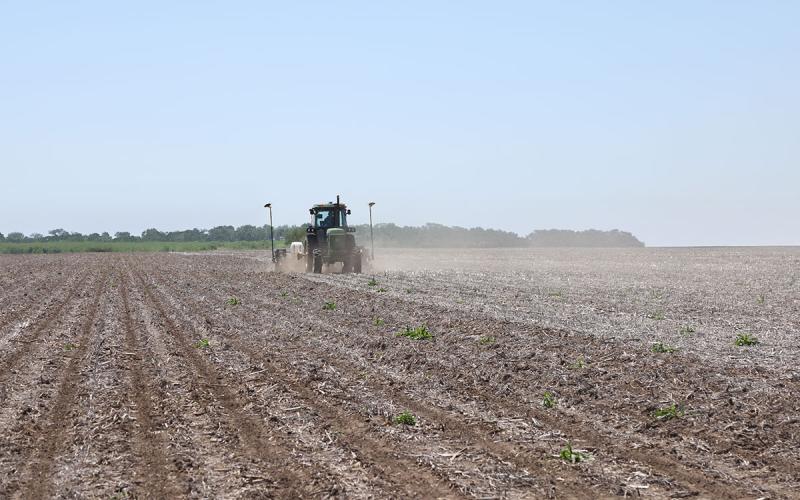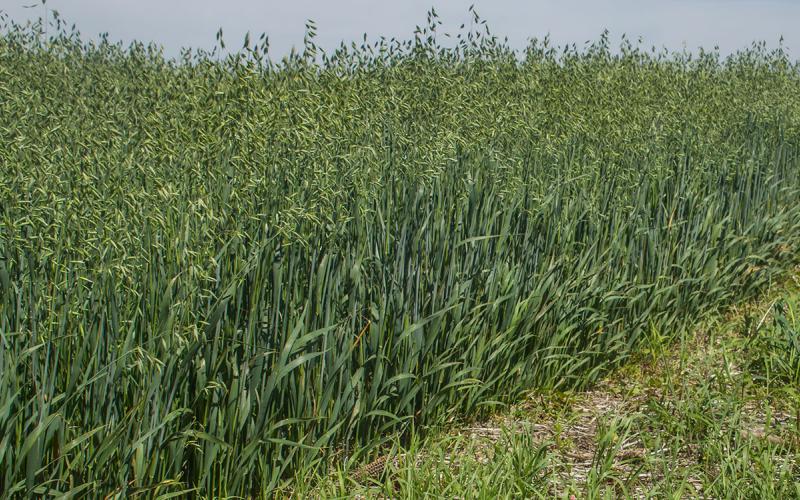
All of South Dakota is currently in some level of drought according to the U.S. Drought Monitor. Precipitation has been in the forecast many times and has not materialized. We all know that climate patterns can shift from dry to wet or visa vera very quickly. Managing crop inputs should never follow a plan for failure approach. However, with combined currently dry soils and depressed commodity prices, changing management for more flexibility is probably good. A current consideration is thinking about seed injury from furrow-placed fertilizers. There are differences among the crops for tolerance of seed-placed fertilizers. As a rule:
- Cereal grains and corn are more tolerant of seed-placed fertilizers than oil seeds (soybeans, sunfowers, canola ect.)
- Smaller seeds are more susceptible to seed-placed fertilizer damage than larger seeds.
- Wider row spacing decreases the rate of safe fertilizer that can be placed with the seeds.
- Drier soils decrease safe fertilizer rates.
Fertilizer Rate Guidelines
Below are a tables containing fertilizer rate guidelines for the more-common fertilizer materials (MAP, 10-34-0, 0-0-60 UAN 28%, and AMS) and crops (corn, soybeans, HR spring wheat, oats, sunflowers, and sorghum) to be planted into a fine/medium texture soil with a 10% stand loss tolerance. For coarse-textured soils (sandy soils), the fertilizer rates decrease by another 20% for dry soils and 40% for moist soils. To reduce acceptable stand loss from 10 to 5%, decrease fertilizer rates by 50%. Blended fertilizer rates are not additive by combining the rates shown in the tables. Fertilizer blends depend on the ratio of the fertilizers contained. As a rule of thumb, the rates of safe individual fertilizer rates are reduced by the percentage contained in the blend. When soils are dry, extra caution should be used in placing any fertilizer material in the seed furrow. In addition to the tables below, there is a starter fertilizer calculator that can be downloaded and used to compare different fertilizers, row spacings, stand loss tolerance, soil texture, and soil moisture conditions.
| Crop |
(inches) |
|
|
|
|---|---|---|---|---|
| - |
|
|
||
| Corn |
|
|
|
|
| Soybeans |
|
|
|
|
| HR Spring Wheat |
|
|
|
|
| Oats |
|
|
|
|
| Sunflowers |
|
|
|
|
| Sorghum |
|
|
|
|
- For coarse textured soils (sandy soils), the fertilizer rates decrease by another 20% for dry soils and 40% for moist soils.
- Decrease rates by 50% when decreasing stand loss from 10 to 5%
| Crop |
(inches) |
|
|
|
|---|---|---|---|---|
| - |
|
|
||
| Corn |
|
|
|
|
| Soybeans |
|
|
|
|
| HR Spring Wheat |
|
|
|
|
| Oats |
|
|
|
|
| Sunflowers |
|
|
|
|
| Sorghum |
|
|
|
|
- For coarse textured soils (sandy soils), the fertilizer rates decrease by another 20% for dry soils and 40% for moist soils.
- Decrease rates by 50% when decreasing stand loss from 10 to 5%
| Crop |
(inches) |
|
|
|
|---|---|---|---|---|
| - |
|
|
||
| Corn |
|
|
|
|
| Soybeans |
|
|
|
|
| HR Spring Wheat |
|
|
|
|
| Oats |
|
|
|
|
| Sunflowers |
|
|
|
|
| Sorghum |
|
|
|
|
- For coarse textured soils (sandy soils), the fertilizer rates decrease by another 20% for dry soils and 40% for moist soils.
- Decrease rates by 50% when decreasing stand loss from 10 to 5%
| Crop |
(inches) |
|
|
|
|---|---|---|---|---|
| - |
|
|
||
| Corn |
|
|
|
|
| Soybeans |
|
|
|
|
| HR Spring Wheat |
|
|
|
|
| Oats |
|
|
|
|
| Sunflowers |
|
|
|
|
| Sorghum |
|
|
|
|
- For coarse textured soils (sandy soils), the fertilizer rates decrease by another 20% for dry soils and 40% for moist soils.
- Decrease rates by 50% when decreasing stand loss from 10 to 5%
| Crop |
(inches) |
|
|
|
|---|---|---|---|---|
| - |
|
|
||
| Corn |
|
|
|
|
| Soybeans |
|
|
|
|
| HR Spring Wheat |
|
|
|
|
- For coarse textured soils (sandy soils), the fertilizer rates decrease by another 20% for dry soils and 40% for moist soils.
- Decrease rates by 50% when decreasing stand loss from 10 to 5%


